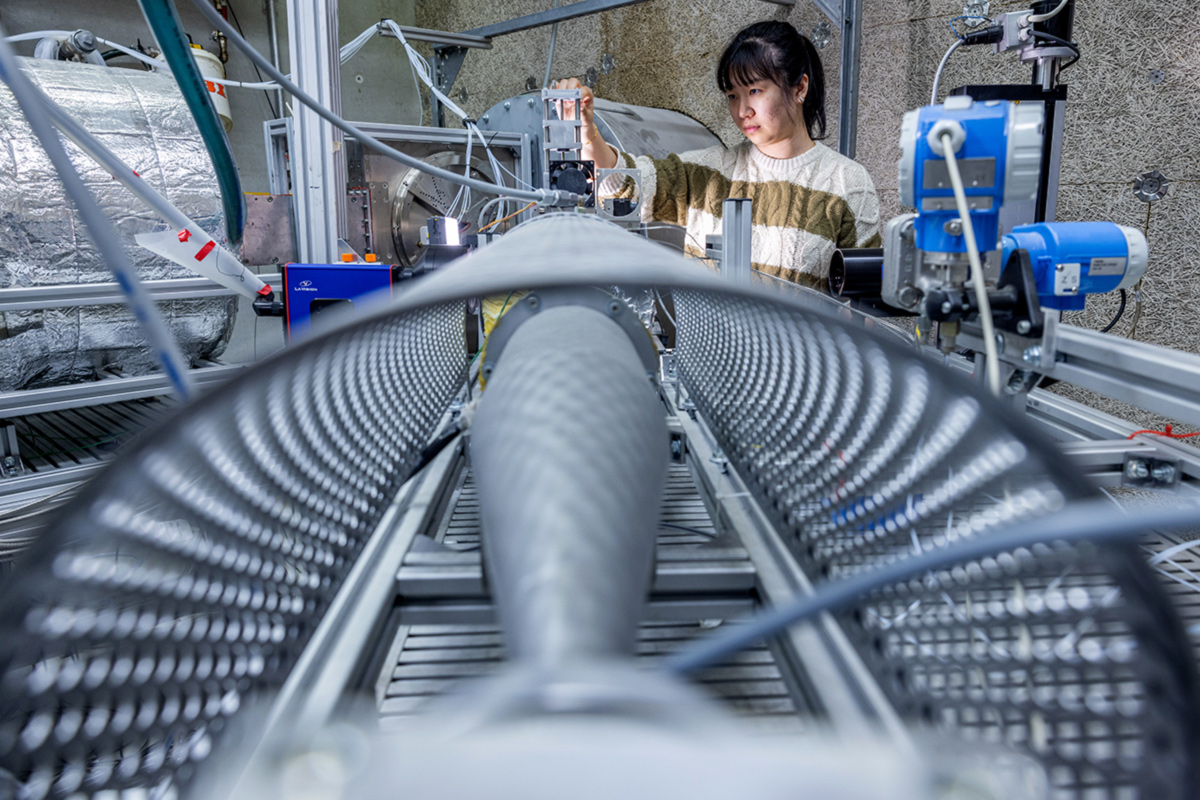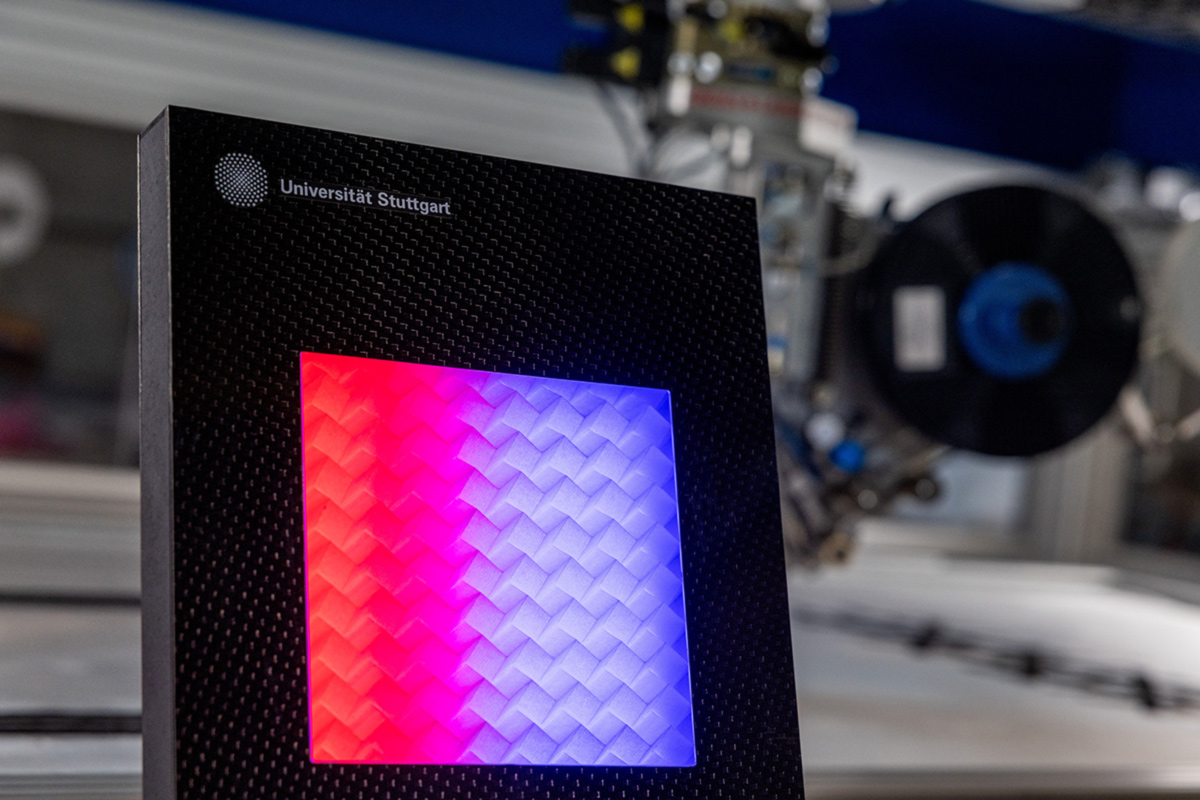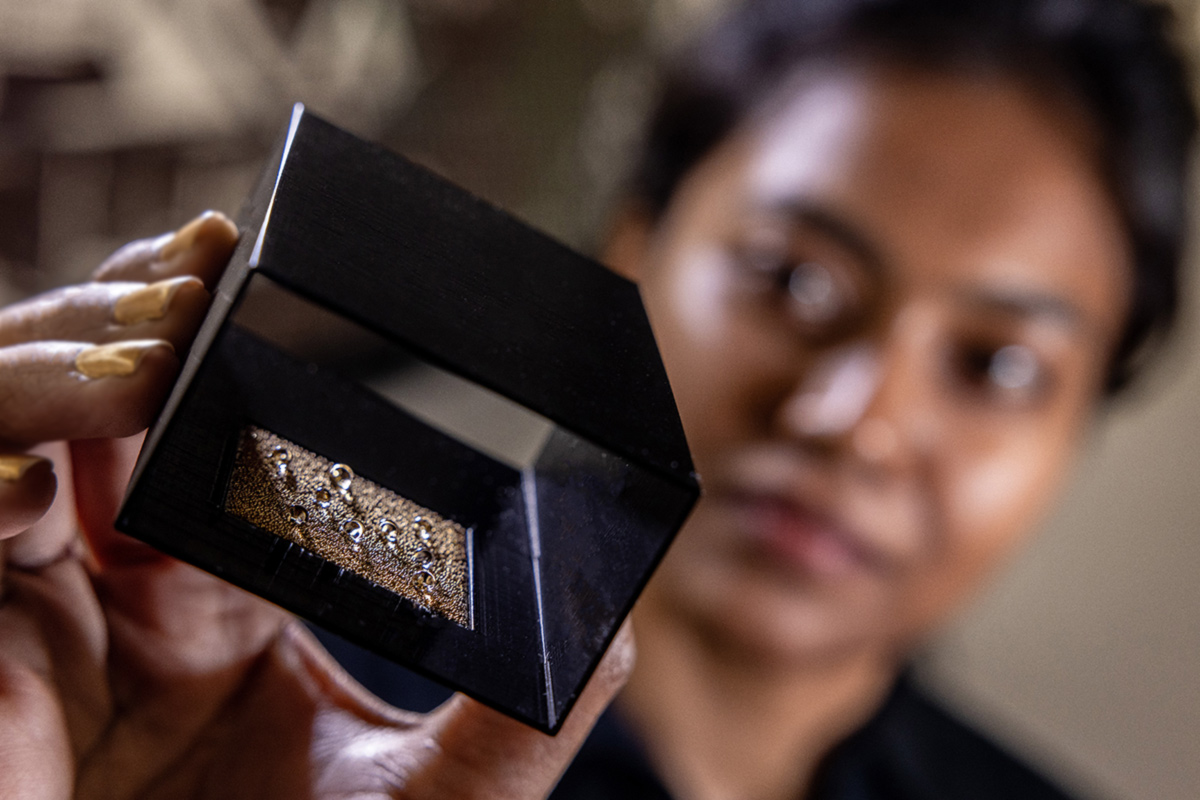B01: Functional integration and preservability of propulsors — waste heat recovery
B01 is dedicated to the investigation of fundamental effects and sensitivities coupled to the functional integration of heat transferring structures for improved waste heat transfer in highly integrated propulsion systems. The high amount of heat that has to be transferred into the propulsor annulus within the given spatial boundaries lead to heat transfer intensification with micro structured surfaces. The additional pressure drop of these micro structures and their time dependent behaviour in terms of fouling due to particle laden flows shall be investigated in this project. This will be accomplished by simplified experiments and scale resolving numerical calculations. The result is a surrogate model that will be exchanged within Syntrac.
Motivation
Unknown effects and sensitivities coupled to the functional integration of heat transferring structures for improved waste heat transfer in highly integrated propulsion systems.
- Significantly changed regime of waste heat
- Interaction with unique propulsor flow field
- Macroscopic and micro-structured surfaces
- Performance retention due to fouling
- Design impacts of morphing structures
- Consideration of exhaust gas treatment
Objective
Quantification of aero-thermodynamic sensitivities and synergy potential.
Development of a reduced-order model which incorporates heat transfer to the propulsor annulus air flow for use in design and functional integration studies.
- System analysis and assessment of propulsor waste heat recovery.
- Heat transferring structures at high Ma and Re number flows.
- Provision of knowledge and method transfer resulting from possible design variations.
- Time-dependent degradation of heat transfer surfaces.
Approach
The project investigates the susceptibility of flat micro-structured surfaces to fouling, utilizing Particle Image Velocimetry (PIV) to measure pure flow and experimental data from flat plates to establish non-dimensional parameters. Investigating the effect of curvature on fouling of micro-structured surfaces involves using curved μ-structured surfaces to consider additional pressure gradients. Numerical fouling models are extended to incorporate compressor fouling for use with μ-structured surfaces, enhancing understanding through RANS models. Baseline geometries for waste heat recovery are defined in 3D, incorporating multi-physical and multi-disciplinary requirements and design impacts. For waste heat recovery, reduced order model development includes the incorporation of effects due to heat transfer and fouling-induced roughness, alongside sensitivity studies regarding achievable heat transfer. Entropy analysis is conducted for detailed loss accounting. Multidisciplinary design sensitivities for waste heat recovery reflect aerothermal design, deriving guidelines for functional integration of heat-transferring structures.
Role in SynTrac
B01 will deliver a system analysis and assessment of propulsor waste heat recovery and will provide knowledge and method transfer resulting from possible design variations which will have a significant effect on the evaluation of the aircraft power balance.











